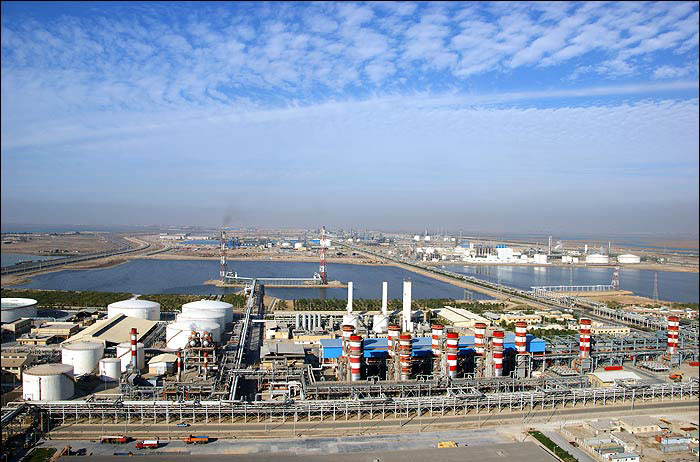The easing of sanctions will have a positive effect on the Iranian petrochemical industry through 2015, but weak demand, the declining cost differential between naphtha and ethane and domestic feedstock constraints will undermine government targets, Business Monitor International predicted in its Q2 2015 report on the Iranian petrochemical sector.
Although Iran began exports to the European Union in January 2015, the recent plunge in crude prices and their effect on naphtha prices has undermined the competitiveness of the country’s largely ethane-fed petrochemicals industry, the report says. Additionally, Iran will slash the government’s production and export targets for fiscal year 2014-15.
The main reason for the failure of the government’s program, as BMI puts it, is the effect of prolonged sanctions, which deterred investment and caused economic decline. Any resumption of sanctions will cause further negative effects on the industry.
While several new plants may come on stream in the next few months, operation rates are likely to be low and plants will be operating at a loss unless Iranian producers can pass on the full costs of production onto consumers in export markets. To operate at reasonable levels of capacity utilization, olefins output would have to increase by a third and polymers by a third, but the demand may not exist without the sanctions being lifted.
Resumption of exports will also help raise Iran’s share of the Middle East’s production output from 25% in 2014, although there are still doubts that it will reach its target of a 41% regional market share by 2020, the report says. It also forecasts that by 2019, ethylene capacity alone will total 11.08 million tons per annum (tpa), with the completion of the Olefins 11 and 12 projects, which will have capacities of 2.0 million tpa and 1.2 million tpa, respectively.
Production
In the short run, the industry will be grappling with the issue of falling crude oil prices, which are leading to a concurrent slump in naphtha prices.
With the Iranian petrochemical industry dependent on ethane for 80% of its feedstock and naphtha for just 8%, the narrowing price differential between ethane and naphtha threatens petrochemicals’ margins, the report suggests.
International markets will play an important role in industry’s growth with exports of petrochemical products targeted at $12 billon in the year ending March 20, 2015. However, the report predicts that even with sanctions eased, it is not expected to reach the target of 7% growth in the value of exports, even if volumes fare better. The report considers that the industry faces significant structural challenges. The industry continues to ramp up capacities well ahead of demand growth, while at the same time some petrochemical complexes are suffering feedstock shortages particularly during winter months.
Petrochemical complexes need 30-35 million cubic meters (mcm) of gas per day. In 2014, the oil ministry ordered the petrochemical complexes to lower their production rate to the minimum, or even halt production until further notice, a scenario that could be repeated in 2015 in the event that household heating places a strain on gas demand. The cost of the shutdown for the petrochemical industry is estimated at $1.5 billion.
Aside from pressure on supply, Iranian ethane feedstock is nearly three times more expensive than in Saudi Arabia. This could change if the petrochemical sector is able to raise the proportion of total natural gas allocated to the industry from 7% to 25% by 2015. This, too, looks set to fail owing to a crunch in investment. Iran’s chief export market, China, will also move towards self-sufficiency, while Asian markets will be increasingly supplied by low-cost US petrochemical output. Low-capacity utilization is therefore going to be an enduring problem.
Moreover, although Iran will be keen to secure tie-ups with European petrochemical producers, the country will retain a highly risky business environment, according to the report. The industry will need foreign skills and equipment if it is to add value to output and diversify its product portfolio.
Consumption
BMI believes that the Iranian economy will play an increasingly significant role in the growth of petrochemical industry. It forecasts real GDP growth of 2.9% in 2015, up only slightly from the 2.8% estimated in 2014.
Growth should stimulate domestic industries which consume petrochemicals, namely the auto industry consuming a broad range of polymer and synthetic rubber products.
The outlook for the Iranian construction industry - which is the key driver of construction-related petrochemicals such as polyvinyl chloride (PVC) and certain applications of polyethylene (PE) and polypropylene (PP) - in the short-to-medium term is turning more optimistic.
Although the report estimates there was a contraction of 1% in real terms in 2013, it forecasts the industry to grow by 1% in 2015 and by an average of 3.8% over the next five years.
The more positive outlook is based on the possibility of economic sanctions over Iran’s nuclear energy program being eased by the West, low base effects, and a high demand for infrastructure projects. There are, however, high risks associated with the country’s challenging macroeconomic picture and its weak business environment.


